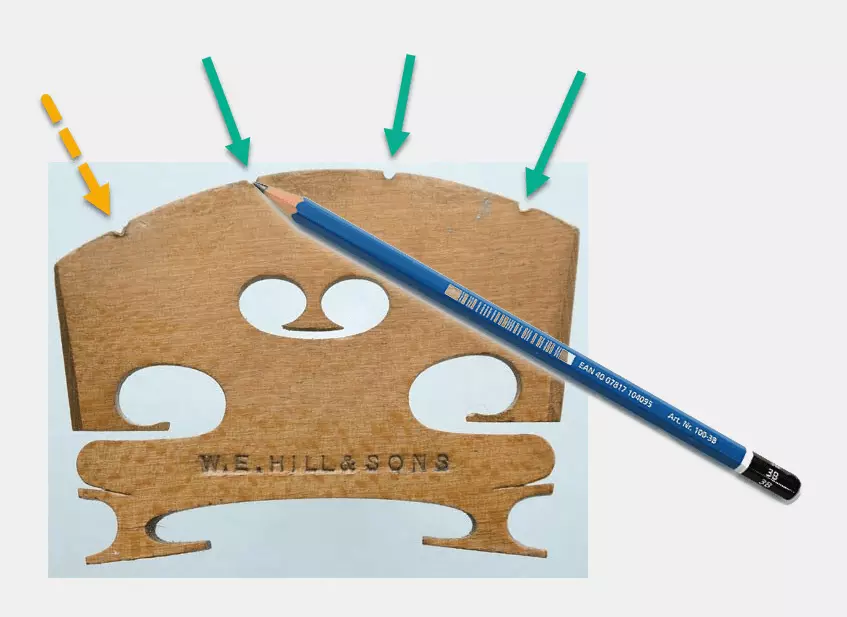For the optimal use of your strings there are a few things you can do:
1. Prevent the strings' winding from cracking at the bridge.
To help create a smooth texture on the bridge use a pencil to mark along the grooves for a smooth slide of the strings.
The core of pencils is made of the non-toxic mineral ‘graphite’ that does this job nicely. You can use any pencil, but softer grades are better as you need to apply less pressure, and therefore you are less likely to accidentally deepen the grooves in the bridge. There is no need for this where strings use tubes e.g. most violin E strings.


The average pencil has ‘HB’ printed on it to indicate a ‘mixture’ of hardness (H) and Blackness (B). One middle-of-the-range pencil carries the letter F (as it is still hard enough to be sharpened to a Fine Point). The blackness is achieved by the graphite (the hardness is achieved by baked clay). Softer pencils do not show the letter H. You should find softer grades pencils (B, 2B, 3B, etc.) in good stationery shops or art supply stores. The softer the pencil, the thicker the core and the easier the core/tip breaks. Say 2B would be a good choice but any pencil without ‘H’ or ‘F’ would be more suitable than those containing an H or F.
A good specialist violin shop applies graphite to the bridge before they sell an instrument. However, over time, this wears off. A good idea is to perform this lubrication of the bridge grooves when changing strings.
Remark: You should check the straightness of the bridge at the same time. After putting on new strings you may find that the bridge leans toward the scroll. Always check that the back of the bridge is perpendicular (90 degrees) to the body of the violin, and the feet of the bridge are flush against the wood.
2. Prevent the strings' winding from cracking at the nut.
The nut at the top of the fingerboard should be treated with graphite as well once in a while to help prevent premature cracking of the winding. If strings continue to crack at the nut it may well be that the instrument needs servicing. Over time, the grooves in the nut become deeper and the edges of the grooves become too sharp, rubbing unduly against the strings. This can be rectified by good violin shops.

3. Prevent the strings from ageing to early
To help preserve a strings lifespan it is recommended that your wipe off any rosin dust that has been left on the strings from your bow.
Fingers put small amounts of oil onto the string when playing. This oil may try to penetrate between the windings of the strings. This will contribute to the decay of the strings’ brightness. The sound of strings becomes blunt over time anyway, but to keep strings clean will help to delay this from happening. String Cleaners can be used to maximize the performance and life span of the strings.
Remark: Also wipe off the rosin dust under the strings, particularly between the finger board and the bridge, otherwise the rosin will eventually melt to the varnish.
